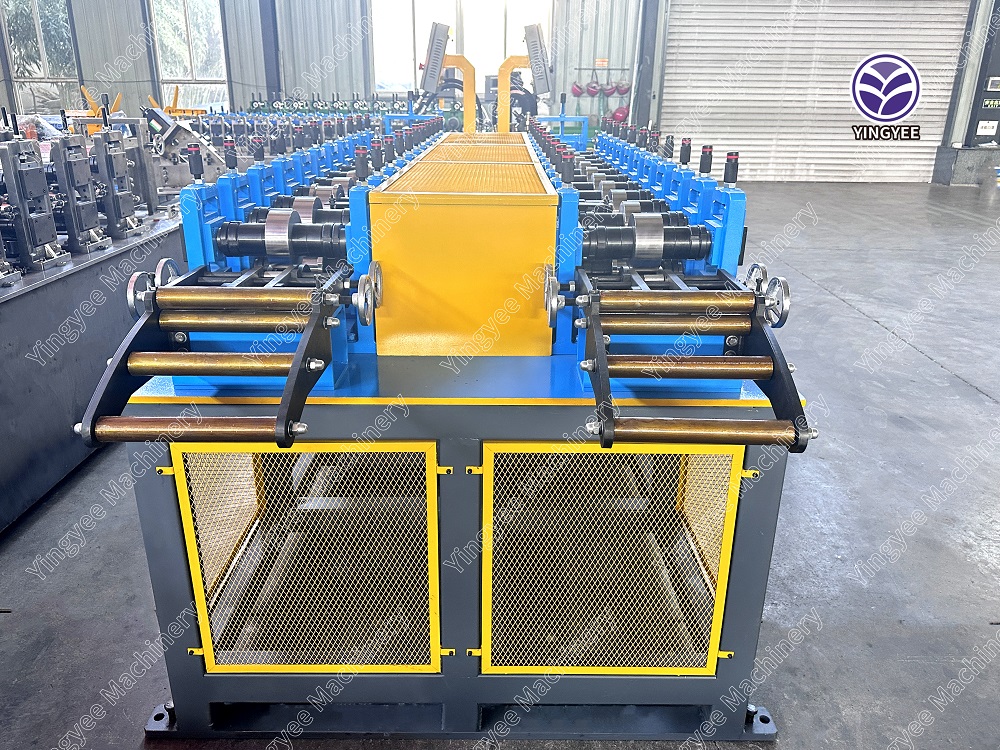
Galvanized Cable Tray Roll Forming Machine An Essential Tool for Modern Electrical Infrastructure
In today's rapidly advancing technological landscape, the importance of efficient electrical infrastructure cannot be overstated. One key component in this infrastructure is the cable tray, which plays a crucial role in the management and organization of electrical wiring. Among the various methods of producing cable trays, the galvanized cable tray roll forming machine stands out as a vital piece of machinery that offers significant advantages in terms of efficiency, durability, and cost-effectiveness.
What is a Galvanized Cable Tray?
A galvanized cable tray is specifically designed to support and secure electrical cables in an organized manner. This type of tray is coated with a layer of zinc to prevent corrosion, ensuring a longer lifespan even in challenging environments. The galvanized finish contributes to the strength and durability of the trays, making them suitable for both indoor and outdoor applications. They are commonly used in commercial, industrial, and residential buildings, providing a secure pathway for wire management.
The Role of the Roll Forming Machine
Roll forming is a continuous bending operation in which a long strip of metal is passed through sequentially arranged sets of rollers to achieve the desired cross-sectional shape. The galvanized cable tray roll forming machine is specially designed for this purpose. It transforms flat galvanized steel sheets into various shapes and sizes of cable trays with precision and uniformity.
The machine operates by feeding the steel sheet into the system, where it undergoes a series of progressive forming stages. As the sheet passes through the rollers, it gradually takes on the desired profile, which can vary based on the specifications of the project. The result is a high-quality cable tray that meets stringent industry standards.
Benefits of Using a Galvanized Cable Tray Roll Forming Machine

1. High Efficiency One of the primary advantages of using a roll forming machine is its high production efficiency. The continuous nature of the process allows for the rapid creation of cable trays, significantly reducing manufacturing time compared to traditional methods.
2. Cost-Effectiveness By automating the production process, manufacturers can save on labor costs while also minimizing material waste. The precision of the roll forming process ensures that each cut-off is accurate, leading to less scrap metal and fewer expenses.
3. Customization The roll forming machine can be easily adjusted to produce cable trays of various sizes, shapes, and configurations, allowing for customization based on specific project requirements. This flexibility makes it an ideal choice for companies looking to meet diverse client demands.
4. Durability and Quality The use of galvanized steel ensures that the finished product is not only strong but also resistant to rust and corrosion. This durability is crucial in maintaining the integrity of electrical systems, particularly in environments exposed to moisture or extreme temperatures.
5. Reduced Labor Involvement Automation minimizes the need for manual labor in the forming process, reducing the likelihood of human error and increasing overall safety in the workplace. Operators can monitor the machine workflow, focusing on quality control rather than manual production efforts.
Conclusion
The galvanized cable tray roll forming machine represents a significant advancement in the production of cable management solutions. With its ability to produce high-quality, durable, and customizable trays efficiently, it is an indispensable tool for manufacturers in the electrical infrastructure industry. As the demand for reliable and organized electrical systems continues to grow, the adoption of such innovative machinery will undoubtedly contribute to enhanced productivity and safety standards in the field. Investing in a galvanized cable tray roll forming machine is not just about keeping pace with industry trends; it’s about empowering businesses to meet the challenges of modern electrical infrastructure head-on.